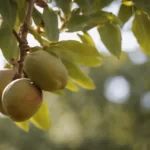Lupines, with their vibrant spikes of flowers, are a stunning addition to many gardens. However, their beauty often comes with a question of safety, particularly regarding their toxicity. This is a crucial consideration for gardeners, especially those with young children or pets. Understanding the potential risks associated with lupines is essential for creating a safe and enjoyable garden space. This article aims to provide clear information about the toxicity of lupines and how to safely incorporate them into your garden.
Lupines
Lupines, belonging to the genus Lupinus, are notable for their attractive, tall spikes of flowers, which come in a variety of colors. These perennials and annuals are popular in gardens for their ability to enrich soil with nitrogen and their ease of growth in a range of conditions. Beyond their aesthetic appeal, lupines have been used in agriculture for soil improvement and as forage crops. However, their use in gardens has led to concerns about their safety, particularly because of the alkaloids they contain, which can be harmful if ingested.
Toxicity of Lupines
The primary concern with lupines is their toxicity, which is due to the presence of alkaloid compounds. All parts of the plant, including seeds, leaves, and stems, contain these compounds. The concentration of these toxins can vary among species and even within different parts of the plant. Ingesting these parts can lead to lupine poisoning in both humans and animals, including pets and livestock. While the risk of severe poisoning is relatively low, it’s important to be aware of the potential dangers, especially in gardens frequented by children and pets.
Symptoms of Lupine Poisoning
Recognizing the symptoms of lupine poisoning is crucial for prompt and effective response. In humans, ingestion of lupines can cause symptoms ranging from mild to severe, including nausea, vomiting, abdominal pain, and dizziness. More serious cases might lead to respiratory depression, convulsions, and in rare instances, death.
Animals, particularly livestock and pets, are also susceptible to lupine poisoning. Symptoms in animals can include lethargy, abnormal heart rate, labored breathing, and neurological signs such as incoordination or excitement. In livestock, lupine ingestion during certain gestational periods can cause birth defects. Early recognition of these symptoms is key to managing lupine poisoning effectively.
Safety Precautions with Lupines
To safely incorporate lupines into your garden, it’s important to take certain precautions. If you have young children or pets, consider planting lupines in areas that are less accessible to them. Educating family members, especially children, about not eating or touching plants without supervision is also crucial.
Regularly checking your garden for fallen lupine seeds or leaves and keeping them tidy can minimize the risk of accidental ingestion. Additionally, wearing gloves while handling lupines, particularly when pruning or deadheading, can prevent skin irritation and reduce the risk of transferring plant material to your mouth or eyes.
First Aid and Treatment
In the event of lupine ingestion, it is important to act swiftly. If someone ingests part of a lupine plant, remove any plant material from the mouth and provide water to drink. For mild symptoms, monitor closely for any progression. In cases of significant ingestion or if severe symptoms develop, such as difficulty breathing or altered consciousness, seek medical attention immediately. It’s helpful to bring a sample of the plant to assist healthcare professionals in identifying the cause and determining the appropriate treatment.
For pets, if you suspect they have ingested lupines, contact your veterinarian or an animal poison control center immediately. Do not induce vomiting unless instructed by a professional, as this can sometimes cause more harm.
Alternatives to Lupines
For those concerned about the risks associated with lupines, there are many beautiful, non-toxic alternatives for gardens. Plants like snapdragons, marigolds, and petunias offer colorful blooms without the toxicity risks. These plants can provide peace of mind while still enhancing the beauty of your garden space.
Conclusion
While lupines are a visually striking addition to any garden, their potential toxicity cannot be overlooked. Understanding the risks, recognizing the symptoms of poisoning, and taking appropriate safety measures can ensure that your garden remains a safe and enjoyable space for everyone. With careful consideration and responsible gardening practices, you can create a harmonious environment that balances the allure of lupines with the well-being of your family and pets.



